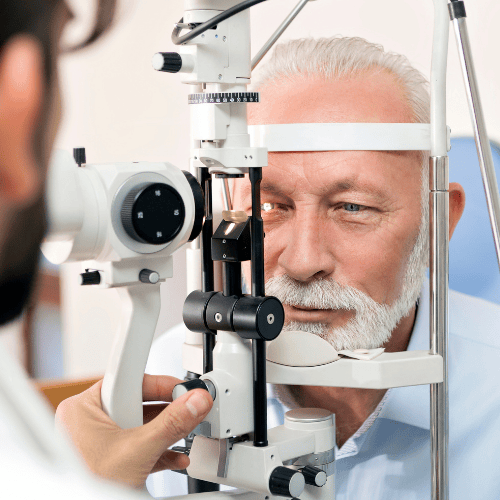UNDERSTANDING AND MANAGING “VISUAL SNOW SYNDROME”
Visual snow syndrome (VSS) is a condition that causes people to see visual disturbances similar to static on a television. This "visual snow" can be persistent and is often accompanied by other symptoms that can affect daily life. As more people learn about visual snow syndrome, it becomes essential to understand its symptoms, potential causes, and how to manage it.

What is Visual Snow Syndrome?
People with visual snow syndrome see a constant “snow” or flickering in their vision, even when it’s bright and clear. Other common symptoms include:
- Photophobia: Sensitivity to bright lights that can cause discomfort.
- Afterimages: Images that continue to appear even after looking away from a source.
- Tinnitus: Ringing or buzzing sounds in the ears.
- Night Vision Problems: Difficulty seeing in low light or dark conditions.
While not very common, the exact number of people affected by VSS is still not known.
Possible Causes
The exact reasons for visual snow syndrome are not fully understood. However, some factors may contribute to it:
- Brain Function: Some studies suggest that overactivity in the area of the brain responsible for processing visual information may lead to visual snow.
- Genetics: There may be a genetic link, as VSS can sometimes run in families.
- Migraine Connection: Many people with VSS also suffer from migraines, suggesting a possible connection between the two conditions.
Diagnosis
Diagnosing visual snow syndrome involves first getting a comprehensive eye exam at your MVO optometrist. Depending on the findings, you may then be referred to a specialist, such as a neurologist. They will review your medical history and conduct an assessment to rule out other issues that could be causing similar symptoms.
Managing Visual Snow Syndrome
There is currently no cure for visual snow syndrome, but various strategies may help reduce symptoms. Here are some options:
- Lifestyle Changes:
- Get Enough Sleep: Prioritize sleep to help manage symptoms.
- Reduce Stress: Try relaxation techniques like meditation or deep-breathing exercises to decrease stress, which can worsen symptoms.
- Diet Changes:
- Some people find that drinking enough water and reducing caffeine and alcohol helps manage their symptoms.
- Medicines:
- While there’s no specific medication for VSS, some treatments that are normally used for migraines might help. Always discuss with a doctor to find the best options for you.
- Cognitive Behavioral Therapy (CBT):
- Talking to a therapist can help you manage the anxiety and stress that often come with these symptoms.
- Support Groups:
Connecting with others who have visual snow can provide emotional support and practical tips on coping.
Conclusion
Visual snow syndrome is a challenging condition that can greatly impact those who experience it. While the exact cause is still unclear and treatments are not yet standardized, raising awareness and understanding is crucial. By adopting lifestyle changes, exploring medication options, and seeking support, people with visual snow syndrome can find ways to manage their symptoms more effectively. If you think you might have visual snow syndrome, it’s important to talk to a healthcare professional for guidance. Start with
booking an eye exam with your MVO Optometrist.











